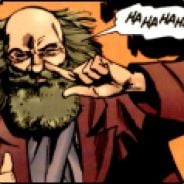- cross-posted to:
- humor@beehaw.org
- fuckcars@lemmy.world
- cross-posted to:
- humor@beehaw.org
- fuckcars@lemmy.world
Link: https://xkcd.com/2956/
Alt-text:
Attention all passengers: This is an express sequence to infinity. If your stop is not a power of two, please disembark now.
Thank you :)
does this create new numbers through induced demand ?
God, it was so nice living by spiral point phi until the new line brought in all that traffic.
Just one more number line bro
Fools, everyone knows that the congestion is at 1 - it’s Benfords law.
We are again wasting taxpayer money on building bridges to nowhere, while traffic remains congested where it actually counts.
Oh, great. Now people will be forever having to explain that they meant the other 3.5, the other 3.9, or other Pi.
It really needs a new digit alongside 3, where it branches. Is it too late to write to the standards committee?
- prefixes numbers along the number line in the opposite direction. If we had a second branch starting after 3 we could do the same if they shared digits and bases with the standard number line. Maybe suffix - or prefix 3№ or something like that.
Clearly XKCD doesn’t time travel because Mathmaticians who create yet another use for the Delta symbol would be crucified in the future Meritocratic Dystopia.
Well there’s ya problem ur branching at pi. Aint gonna be solving any congestion problems.
You can do something like this with ℝ[ω] where ω is a complex cube root of unity and the restriction that at least one of the real or ω-part of a+bω must be zero. Edit: Just realised that I didn’t specify that a and b should be non-negative reals, otherwise we end up with six lines from 0 not three.
Standard addition breaks immediately, but an addition-like operator can be defined by imagining a train shunting along the restricted lines in the direction of the greater magnitude.
Choo-choooo
Oh jeez, now the trolley problem has math?!
I thought they called it “complex” numbers
Wait till someone tells them about p-adic numbers







